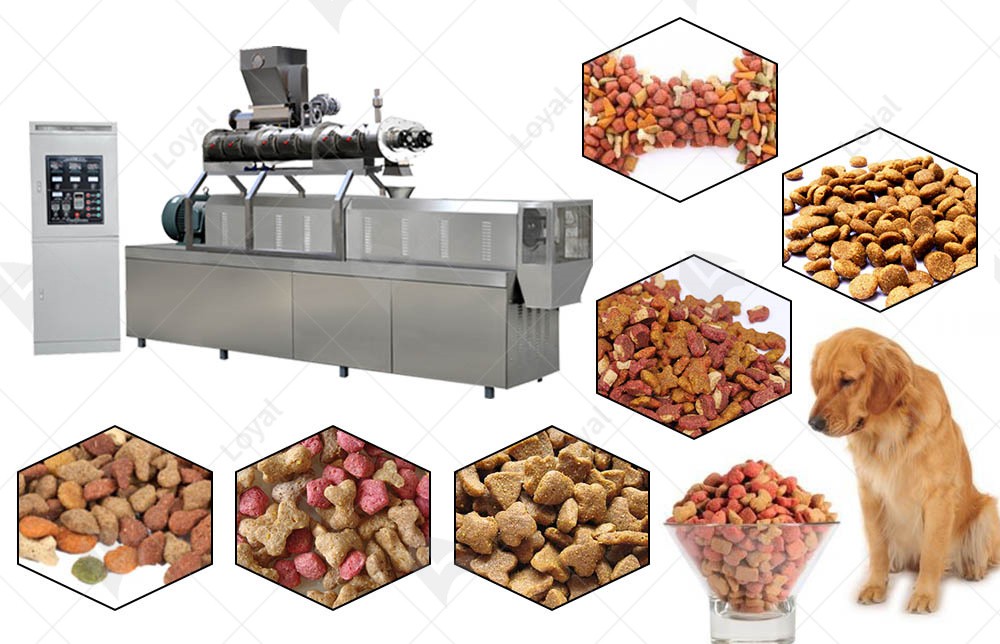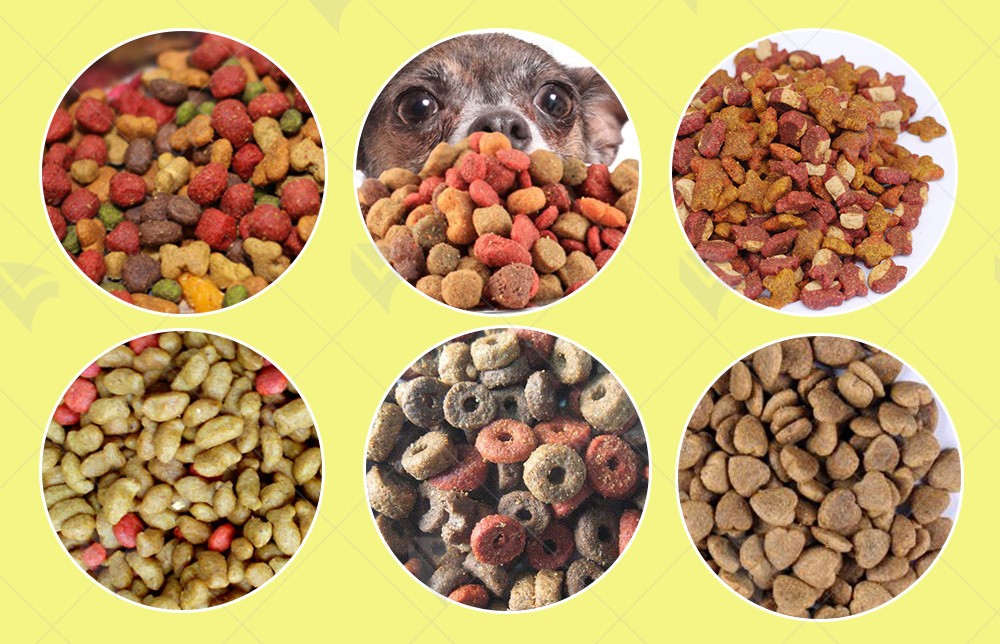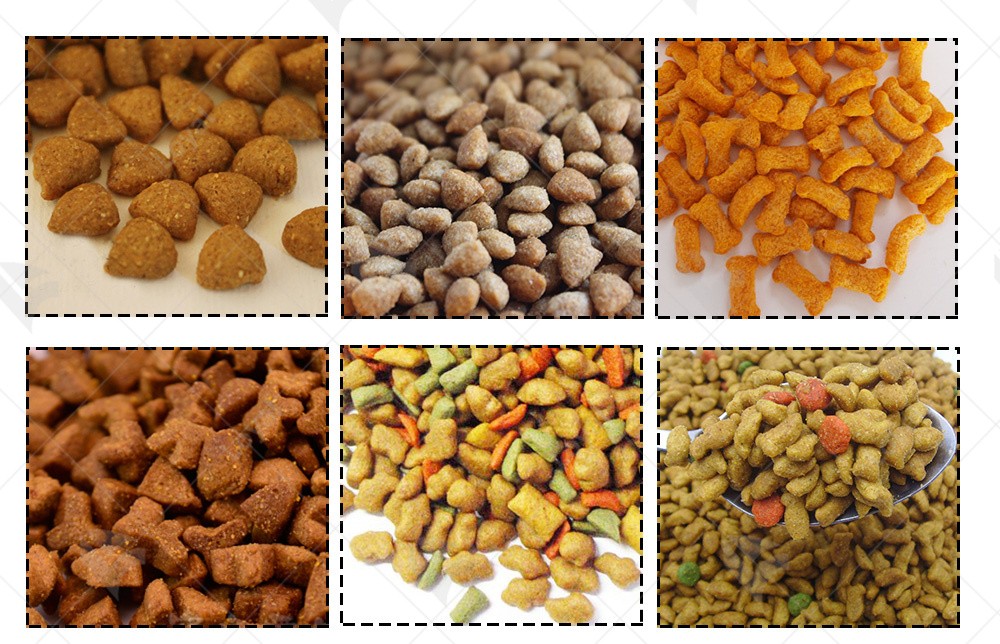Discover The Secret To Perfect animal feed machine: animal feed machine Recipes
Brief Overview of the Importance of Animal Feed Production
In the dynamic landscape of modern agriculture, animal feed production stands as a vital pillar, underpinning the efficiency and success of livestock farming operations worldwide. As the global population continues to expand, the demand for animal-based protein sources such as meat, milk, and eggs has surged, necessitating innovative solutions to meet this ever-growing need. This is where the significance of animal feed production, and in particular, the role of fully automated animal feed machines, becomes paramount.
At the heart of this process lies the animal feed machine, a technological marvel that has revolutionized the way feed is formulated, mixed, and distributed. These machines represent the cutting edge of food machinery technology, designed to streamline production processes, eliminate human error, and optimize resource utilization. Their impact on animal feed production is profound, enhancing efficiency, reducing costs, and ultimately, maximizing output.
The importance of animal feed extends far beyond mere sustenance. High-quality feed is essential for maintaining the health and well-being of livestock, which in turn translates to higher productivity and better-quality products for consumers. Nutrient deficiencies in feed can lead to stunted growth, reduced fertility, and increased susceptibility to diseases, all of which can have severe consequences for farmers' bottom lines. Conversely, precisely formulated and balanced feed ensures that animals receive all the necessary nutrients for optimal growth and development.
Moreover, the efficient production of animal feed is crucial for sustainability and environmental stewardship. By reducing waste and minimizing the use of resources such as water and energy, fully automated animal feed machines contribute to a more eco-friendly and resilient food production system. This not only benefits farmers but also aligns with the global push towards sustainable agriculture and responsible food production.
In today's competitive marketplace, farmers and feed manufacturers must constantly strive to improve their operations and reduce costs. Fully automated animal feed machines offer a powerful tool for achieving these goals. By automating time-consuming and labor-intensive tasks, these machines free up personnel to focus on other value-added activities, while also reducing the risk of errors and improving overall productivity.
In conclusion, the importance of animal feed production cannot be overstated. It is a cornerstone of modern agriculture, essential for ensuring the health and productivity of livestock, and ultimately, for meeting the world's growing demand for animal-based protein sources. Fully automated animal feed machines play a vital role in this process, enabling farmers and feed manufacturers to maximize production, reduce costs, and enhance efficiency. As the global agricultural industry continues to evolve, the adoption of these machines will become increasingly critical for maintaining a competitive edge and contributing to a sustainable and prosperous future.

How a Fully Automated Animal Feed Machine Enhances Efficiency
In the competitive landscape of the animal feed industry, maximizing production while maintaining efficiency and cost-effectiveness is a top priority. This is where a fully automated animal feed machine becomes an invaluable asset. As an industrial food machinery expert, I am poised to discuss how these machines revolutionize the production process, driving efficiency to new heights.
1.The automation of the animal feed production process through a fully automated machine eliminates the need for extensive manual labor. This not only reduces the risk of human error but also enhances precision and consistency. The machine precisely measures and mixes ingredients according to pre-programmed formulas, ensuring that every batch of feed is produced to exact specifications. This level of control is unmatched by traditional, manual methods, allowing producers to maintain high standards of quality while increasing production volumes.
2.The continuous operation capability of a fully automated animal feed machine is a game-changer. Unlike manual or semi-automated processes, where downtime can significantly impact output, automated machines are designed for uninterrupted performance. This means that ingredients are continuously fed into the system, and feed is continuously produced, minimizing idle time and maximizing production capacity.
3.The real-time monitoring and control features of modern fully automated animal feed machines are a testament to their efficiency. Advanced sensors and control systems provide operators with valuable insights into the production process, allowing them to make informed decisions and adjust settings as needed. This ensures that production remains efficient and that any issues are quickly identified and resolved, minimizing downtime and maximizing output.
4.The integration of advanced features such as recipe management and inventory tracking systems further enhances the efficiency of fully automated animal feed machines. These features enable producers to easily customize feed formulas and optimize ingredient usage, reducing waste and improving cost-effectiveness. Moreover, the ability to track inventory levels in real-time ensures that raw materials are always available when needed, preventing production delays and ensuring a smooth flow of feed from start to finish.
5.The adoption of a fully automated animal feed machine can significantly improve workplace safety. By eliminating the need for manual handling of heavy or hazardous materials, these machines reduce the risk of injury to workers. This not only leads to a safer working environment but also contributes to a more productive and motivated workforce, further enhancing overall efficiency.
In summary, a fully automated animal feed machine is a powerful tool for enhancing efficiency in the animal feed industry. By eliminating manual labor, enabling continuous operation, providing real-time monitoring and control, integrating advanced features, and improving workplace safety, these machines drive productivity and cost-effectiveness to new levels. As the demand for high-quality animal feed continues to grow, the adoption of fully automated animal feed machines will become increasingly important for producers seeking to stay competitive in the market.

Cost-Effectiveness of Fully Automated Animal Feed Production
In the dynamic world of animal agriculture, where production efficiency and cost-savings are paramount, the adoption of fully automated animal feed machines has emerged as a game-changer. As an industrial food machinery expert, I have witnessed firsthand the profound impact these machines have had on optimizing production processes and maximizing profitability.
|
Reduced Labor Intensity and Costs |
One of the most significant advantages of fully automated animal feed production lies in its ability to drastically reduce labor intensity and associated costs. Traditional feed production methods often rely heavily on manual labor, which can be time-consuming, error-prone, and costly. In contrast, automated feed machines automate the entire production process, from ingredient mixing and blending to final product packaging. This not only eliminates the need for a large workforce but also ensures that tasks are performed with precision and accuracy, reducing the risk of human error. |
|
Increased Production Capacity and Efficiency |
Another crucial aspect of cost-effectiveness is the increased production capacity and efficiency that comes with fully automated animal feed machines. These machines are designed for continuous operation, allowing producers to maintain a high level of output without interruption. This not only helps to meet demand more efficiently but also allows for the production of customized feed formulas tailored to specific animal needs and growth stages. The precision blending capabilities of these machines further ensure that every batch of feed is produced to the highest quality standards, reducing waste and enhancing overall efficiency. |
|
Reduced Waste and Optimized Ingredient Usage |
Waste reduction is another critical factor in the cost-effectiveness of fully automated animal feed production. Traditional methods often result in over- or under-mixing of ingredients, leading to wasted materials and reduced feed quality. However, automated feed machines precisely measure and blend ingredients according to pre-set formulas, minimizing waste and ensuring that every ingredient is used efficiently. Additionally, the ability to customize feed formulas based on animal needs allows producers to optimize ingredient usage, further reducing costs and enhancing profitability. |
|
Energy Efficiency and Environmental Impact |
Fully automated animal feed machines are also designed with energy efficiency in mind. Many modern machines feature advanced energy management systems that optimize power usage based on production demands, reducing energy consumption and associated costs. This not only benefits the producer's bottom line but also reduces the environmental impact of the production process. As consumers and regulators become increasingly focused on sustainability, the energy efficiency of these machines is becoming an increasingly important selling point.
|
Ensuring Quality and Safety with Automation
In the realm of animal feed production, ensuring the quality and safety of the final product is paramount. As an industrial food machinery expert, I can attest to the critical role that fully automated animal feed machines play in achieving this goal. By automating the production process, these machines offer unparalleled control over every stage, from ingredient handling to final product packaging, ensuring that every batch of feed meets the highest standards of quality and safety.
|
Precise Ingredient Handling and Blending |
One of the key advantages of automation in animal feed production is the precision with which ingredients are handled and blended. Traditional methods often rely on manual processes, which can be prone to human error and inconsistencies. In contrast, fully automated animal feed machines use advanced technology to accurately measure and blend ingredients according to pre-set formulas. This ensures that every batch of feed is produced to exact specifications, minimizing the risk of contamination and maintaining consistent quality. |
|
Continuous Monitoring and Control |
Another crucial aspect of quality and safety in animal feed production is the ability to continuously monitor and control the production process. Fully automated machines are equipped with sensors and control systems that monitor key parameters such as temperature, humidity, and mixing time. This allows for real-time adjustments to be made as needed, ensuring that the production environment remains optimal for producing high-quality, safe feed. |
|
Hygiene and Sanitation |
Hygiene and sanitation are essential elements of any food production process, and animal feed is no exception. Fully automated animal feed machines are designed with hygiene and sanitation in mind. They feature easy-to-clean surfaces, sealed compartments, and automatic cleaning systems that minimize the risk of contamination. This not only ensures the safety of the final product but also reduces the need for manual cleaning, further enhancing production efficiency. |
|
Traceability and Documentation |
In today's regulatory environment, traceability and documentation are crucial for ensuring the quality and safety of animal feed. Fully automated machines are equipped with advanced tracking and recording systems that capture data throughout the production process. This allows producers to easily trace the origin and handling of each ingredient, as well as monitor the production parameters for every batch of feed. This information can be used to create detailed records and reports, which are essential for meeting regulatory requirements and demonstrating compliance to customers and stakeholders. |
Challenges and Solutions for Implementing Fully Automated Animal Feed Machines
The transition to fully automated animal feed machines can be a significant undertaking for any food production facility. As an industrial food machinery expert, I have witnessed firsthand the challenges that come with implementing such systems, as well as the solutions that can help overcome them. In this article, we will explore some of the most common challenges and discuss practical strategies for ensuring a smooth and successful implementation process.
Challenge 1: High Initial Investment
One of the primary challenges of implementing fully automated animal feed machines is the high initial investment required. These machines are often sophisticated and complex, incorporating advanced technology and components. As a result, the upfront cost can be significant, posing a barrier for some producers.
Solution:
To mitigate the impact of the initial investment, producers should carefully evaluate their needs and budget before selecting a machine. Consideration should be given to the long-term benefits of automation, including increased production efficiency, reduced labor costs, and improved quality control. Additionally, exploring financing options, such as loans or leasing arrangements, can help spread the cost over time and make the investment more manageable.
Challenge 2: Technical Expertise and Training
Another challenge of implementing fully automated animal feed machines is the need for technical expertise and training. These machines require skilled operators and maintenance personnel to ensure optimal performance and minimize downtime.
Solution:
Producers should invest in the training and development of their workforce to ensure they have the necessary skills to operate and maintain the machines effectively. This can include partnering with the machine manufacturer for on-site training or sending personnel to specialized training programs. Additionally, creating a culture of continuous learning within the organization can help ensure that personnel remain up-to-date with the latest advancements in automation technology.
Challenge 3: Integration with Existing Systems
Implementing a fully automated animal feed machine often requires integration with existing production systems, such as ingredient handling and storage facilities, as well as packaging and labeling equipment. This can be a complex process, requiring careful planning and coordination.
Solution:
To ensure a smooth integration process, producers should work closely with the machine manufacturer to understand the technical requirements and limitations of the system. Detailed planning and design work should be undertaken to ensure that the new machine seamlessly integrates with existing systems. Additionally, engaging with experienced system integrators can help streamline the process and minimize disruptions to production.
Challenge 4: Change Management
Implementing fully automated animal feed machines often requires significant changes to the way production is carried out. This can be challenging for employees who are used to manual or semi-automated processes.
Solution:
Effective change management is crucial to the success of any automation project. Producers should communicate the benefits of automation to their workforce and involve them in the implementation process. Providing training and support to help employees adapt to the new processes can also help minimize resistance to change. Additionally, recognizing and rewarding employees who embrace the changes can help foster a positive attitude towards automation within the organization.

Reference
The following are five authoritative foreign literature websites in the field of Industrial food machinery:
1. Food Engineering Magazine
Website: https://www.foodengineeringmag.com/
2.Food Processing Magazine
Website: https://www.foodprocessing.com/
3.Journal of Food Engineering
Website:https://www.journals.elsevier.com/journal-of-food-engineering
4. Food Manufacturing Magazine
Website:https://www.foodmanufacturing.com/
5. International Journal of Food Science & Technology
Website:https://onlinelibrary.wiley.com/

